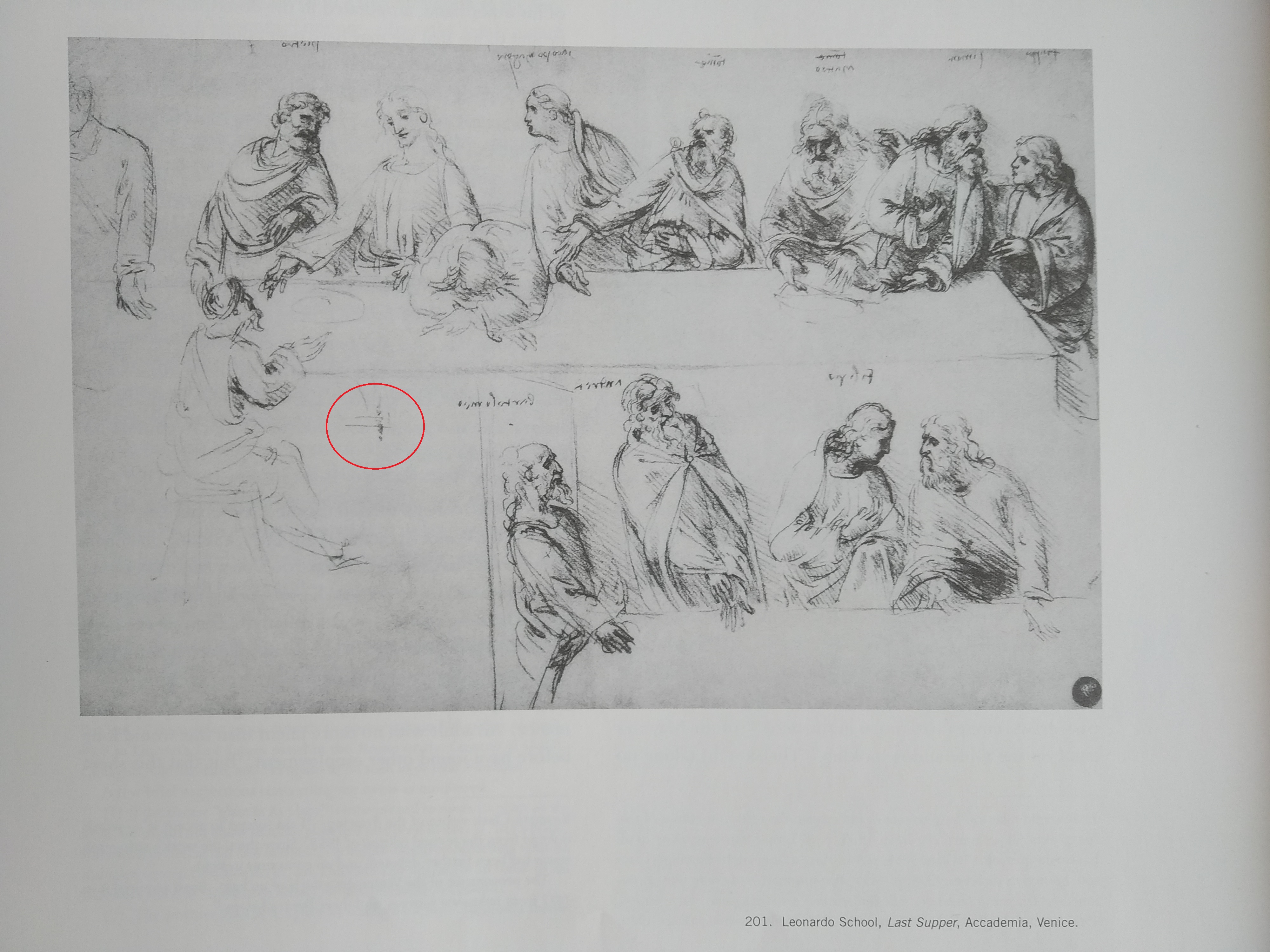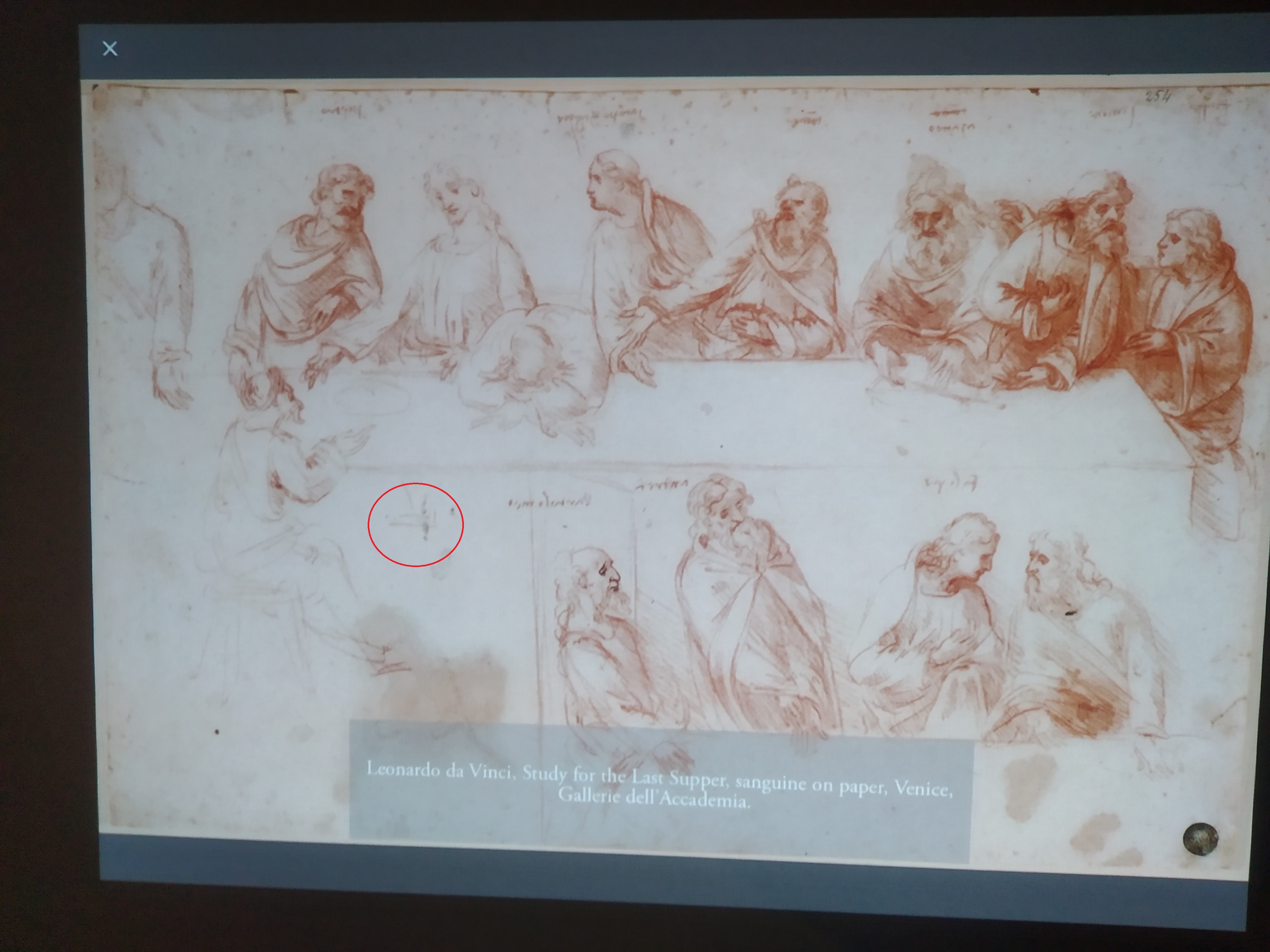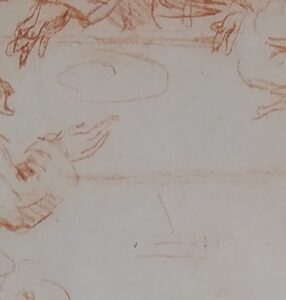Introduction
As a part of Leonardo da Vinci’s 500 years anniversary (*15. 4. 1452 – +2. 5. 1519), I was visiting the exhibition L’uomo modello del mondo in Venice (Italy, 2019) and I had a pleasure to see the original of Leonardo Da Vinci’s Study for the Last Supper. I admired the piece and I was lucky having more than one hour for a peaceful observation.
Details [1]:
red chalk, metal-tannic ink,
white paper, 393 mm / 260 mm
Venice, Gallerie dell’Accademia, Cabinet of Drawings and Prints, n. 254
1494-1495
Provenance: Francesco Melzi collection; Cardinal Cesare Monti 1770; Venanzio de’ Pagave 1777; Giuseppe Bossi 1812 [2, 3]; Luigi Celotti 1822.
Juxtaposition
I have found there is a difference between what is presented in Gallerie dell’accademia in Venice and its exhibition catalogue book L’uomo modello del mondo (SilvanaEditoriale) on the one side and what we know from the past for example from the Leo Steinberg book Leonardo’s Incessant Last Supper or what was presented in Treviso’s Da Vinci Experience exhibition (2019, Italy).
I enclose the pictures, where we can find the problem.

(click to enlarge)
How has this happened, that is the question:
Was there any digital process which had risen to something what was not there in the first place? Or the work was interchanged with a forgery, which is omitting the less important parts? Or these parts were excised during some renovating process or evaporating because being on daylight, with lots of people around? Or it was just needed a special strong flash-light to took up a photography?

(click to enlarge)
Literature and comments
[1] The headline featured image and the Details’s source is the catalogue book of the same named exhibition: Leonardo da Vinci – L’uomo modello del mondo; p. 180; Annalisa Perissa Torrini & col.; 2019
[2] “The provenance of the Venice drawing is of no help. Bossi acquired it in 1812 from unknown sources, and there the trail stops.” Leonardo’s Incessant Last Supper; p. 285; Leo Steinberg; 2001
[3] “…since Bossi himself recounts in his Memoirs, on 10 August 1812, that he bought the drawing and confirms it in a letter to Vincenzo Camuccini of 21 July 1813: ‘I then had a singular drawing about a year ago of Vinci, which is one of his many ideas of the Supper.’ “
Italian original:
“…poiché lo stesso Bossi racconta nelle sue Memorie, in data 10 agosto 1812, di aver comprato il disegno e lo riconferma in una lettera a Vincenzo Camuccini del 21 luglio 1813: ‘Io ho poi avuto circa un anno fa un singolare disegno del Vinci, il quale è una della sue moltissime idee della Cena’ “. – Leonardo da Vinci – L’uomo modello del mondo; p. 180; Annalisa Perissa Torrini & col.; 2019
[4] A highly realistic photo detail of Leonardo da Vinci’s Study for the Last Supper as captured in Leonardo da Vinci – L’uomo modello del mondo; p. 180; Annalisa Perissa Torrini & col.; 2019 [5]
[5] On the detail we can also clearly see, how is Jesus’s right hand turned towards us by its palm and the probably indicated future movement by an extra line over its middle finger. Between its ring and middle fingers Jesus holds likely a piece of bread.

I really liked your blog. Much thanks again. Keep writing. Gabriell Dore Schild